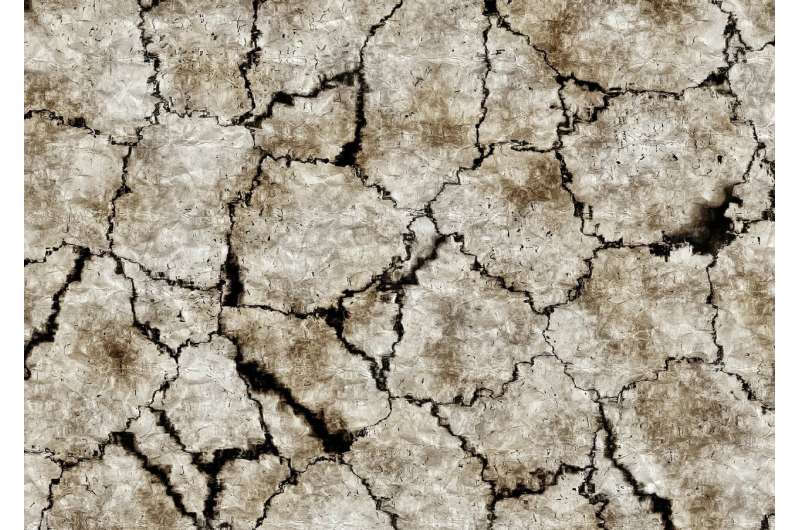January 10, 2019 report
Lab experiments offer credence to theory that subducted crust exists at the base of Earth's upper mantle

A team of researchers affiliated with several institutions in Japan has found evidence that offers credence to a theory that subducted crust exists at the base of Earth's upper mantle. In their paper published in the journal Nature, the group describes experiments they conducted in their lab involving pressurizing material believed to exist in the mantle, and what they found. Johannes Buchen, with the California Institute of Technology, has written a News & Views piece on the work in the same journal issue.
Prior research has suggested that as tectonic plates shift around, some of the material on the surface is pushed below. Prior research has also suggested that such material would likely sink deep into the mantle because it is denser than the pyrolite that is believed to make up most of the mantle. Researchers theorize that that the subducted material would likely settle in the bottom of the transition zone between the upper and lower mantle—but to date, there has been little evidence backing up this theory. The primary test has been analyzing seismic waves traveling through such material, but these readings have two possible explanations—the first is that differences in the speed of waves traveling through material in the area is due to dehydration melting. The other is that it is surface material that has drifted down into the mantle. In this new effort, the researchers report that they believe they have found evidence that supports the latter theory.
The researchers started by noting that the crust beneath the oceans is made mainly of basalt. They also noted that prior research showed that when basalt makes its way into the crust, a mineral called calcium silicate perovskite (CaSiO3) is created. Thus, if crust material made its way to the transition zone, it would be in the form of CaSiO3. But CaSiO3 exists in two configurations depending on its environment—at high temperature and high pressure, it has cubic symmetry. At lower temperatures and pressure, such as on the surface, it has tetragonal symmetry. That meant the team had to subject a sample of the crystal to pressure and temperatures approximately equal to that found in the mantle to test it. Once they succeeded, they sent ultrasonic waves through it to see if they matched what theory had suggested. They found that the cubic form of CaSiO3 did, indeed, slow the waves in approximately the same way as they do when passing through parts of the mantle, suggesting that the material there is very nearly the same. And that suggests the material is, indeed, subducted crust.
More information: Steeve Gréaux et al. Sound velocity of CaSiO3 perovskite suggests the presence of basaltic crust in the Earth's lower mantle, Nature (2019). DOI: 10.1038/s41586-018-0816-5
Journal information: Nature
© 2019 Science X Network


















